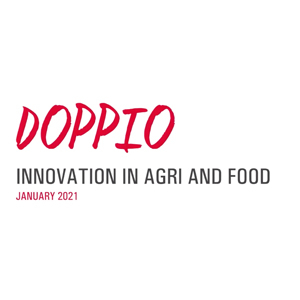Since the launch of the so-called Corporate Social Responsibility (CSR) Directive (2014/95/EU) by the European Parliament, more and more companies in Europe are engaging with CSR. According to the directive, large publicly listed corporations as well as banks and insurance firms with more than 500 employees have to include non-financial indicators in their annual reports from 2017. Often described with terms like “CSR” and “sustainability”, these indicators apply to environmental issues as well as employee-related, social and human rights concerns – all of which demonstrates a new way of thinking about and managing businesses. Accordingly, companies should no longer go after short-term profit, but establish long-lasting values, in economic as well as ecological and social terms.
However, the calls for companies to act more responsibly are not only political; increasingly, other stakeholders like investors, customers, civil parties and employees expect action from companies.
Investors pay attention to sustainability
Current developments like climate change, the growing resource scarcity and insufficient social standards in the supply chain lead to higher risks for companies and are a reason why investors are focusing on sustainable enterprises. Institutional investors in particular include the CSR or sustainability performance of a company in their investment decisions.
On top of typically asked questions on diversity and environmental actions during shareholders’ meetings, investors also look at sustainability rankings and ratings as part of their decision making. In addition to the Dow Jones Sustainability Index, a company’s CDP ranking (managed by a non-profit organization originally known as “Carbon Disclosure Project”) is increasingly considered. Each year, CDP conducts a survey of approximately 5,000 companies worldwide, looking at their strategies to reduce carbon dioxide and their handling of resources like water and wood (see www.cdp.net). Both the number of participant organizations and interest from investors is growing year by year. At the time of writing, 822 investors support CDP, with a total amount of USD 95 trillion assets under management. Since 2009, CDP has partnered with the financial news company Bloomberg, which has been publishing “ESG” data (i.e. data on ecological, social and governance issues) from more than 5,000 companies. This data is accessed around 1.5 million times each year.
Retention and expansion of the customer base
The customer’s purchase decision and the company’s brand image increasingly depend upon the customer’s sense of how ethically correct the product and company is. Today, the customer demands more than a high-quality end product. Global NGOs use this increased customer awareness to denounce unethical behavior, such as working conditions in the apparel industry. However, retailers also come under close scrutiny; for instance, American organic retailer Whole Foods experienced a wave of protest on social media channels because it packed peeled oranges in plastic boxes.
At the same time, companies recognize the potential to retain existing customer segments or to expand into new ones by having a targeted CSR image. For this reason, the additional customer segment LOHAS was identified in developed countries. LOHAS stands for ‘lifestyle of health and sustainability’ – a customer segment characterized by high purchasing power and a lifestyle orientation towards naturalness, authenticity, participation and health. This target group is considered as having an above-average education and a high income. They consume quality-oriented, health-conscious products and always look at the social and environmental compatibility of a company’s offering. Examples such as Fair Trade at Ben & Jerry’s or the BMWi electric vehicles show the trend for promoting sustainable products in order to increase customer acquisition or retention.
Companies are also exploiting CSR opportunities by developing CSR strategies focusing on social innovation and offering specific products solely for developing countries. A couple of years ago, General Electric (GE) developed a new electric cardiogram (EKG) specifically for the Indian market. Instead of costing USD 10,000, the new EKG costs only USD 500. On top of that, it is small, robust and easy to handle. The product has proven popular beyond India; it is now being sold in 120 countries and is even being used in the US and Europe, mainly in ambulances and small medical practices.
Interestingly, many consumer goods companies sell their products in smaller packages in India; for example, Cadbury, Mondelez’s best-selling brand of chocolate bar, is available in a 7-gram bar for 7 cents. The larger bar costs USD 2. Furthermore, L’Oréal sells its hair products in smaller packages and single-use sachets for 4 cents. In 2015, more than 50% of India’s personal product sales by volume came from small packs (China and Brazil: <30%; US and UK: <20%). L’Oréal’s Head of India has confirmed that if a company does not adapt sizes to less affluent customers then “it cannot exist in the Indian market”.
Interest of employees and job applicants in CSR
The labor market is facing a big change. Generation Y-ers, born between 1980 and 1990 and well-educated, are flooding the labor market. A good career and development opportunities are still important. However, employees and job applicants now also look very carefully at the companies for whom they work. Employers with a stronger, more authentic brand are more likely to attract younger, more motivated talent. In this respect, CSR also plays an important role; for instance, HR consulting company Egon Zehnder is convinced that, today, young talent want to work for an employer that demonstrates socially and environmentally responsible behavior. Ethics and integrity are highly valued by this generation. They prefer companies that engage socially or give them the opportunity to make the world a better place.
CSR as the success model of the future
Companies who want to meet the challenges of the future can develop new products and markets via social innovations. This allows them to reposition themselves even in times of saturated and highly competitive markets. CSR and sustainability is no longer a side issue for idealists – it is a central theme of the modern understanding of strategy and management. Executives should view CSR and sustainability not only as one-sided risk and environmental management or patronage; instead, they should understand it as the systematic identification of opportunities that also contribute to sustainable development. In this way, not only is the risk minimized, but also motivation, innovation and long-term success are encouraged.
In order to maximize these opportunities, internal changes need to be made that incorporate CSR and sustainability within the core business. This integration should take place across three dimensions:
- Strategy and Management, with quantifiable CSR targets and KPIs; for example, H&M has set a target to reorganize its cotton production to 100% sustainable cotton by 2020.
- Structures and Capabilities, with determined resources that drive the CSR targets within their departments.
- Culture and Values that encourage an innovative culture and create open space for managers to implement fundamental changes.
In this way, CSR and sustainability initiatives can achieve maximum buy-in across the organization. That, in turn, will help the organization attract the best talent, and keep customers and investors happy in the coming years.





